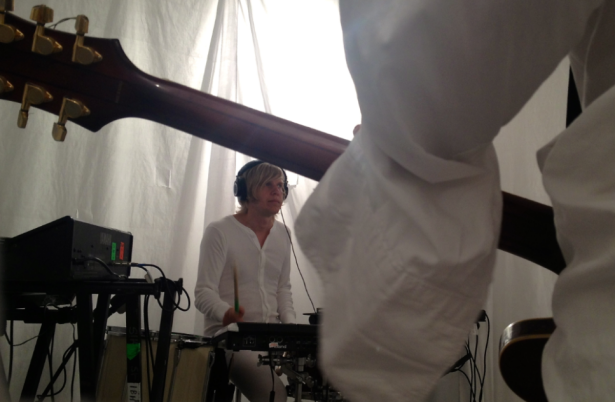Your personal music search space.
Augment your understanding of music.

______________________________________________________________________________

YMUSIC SEARCH ENGINE
Music is more than a casual leisure, an art or the new way to increase the benefits of a company. It is all of that and even more. The music industry is a rich ecosystem in which everyone and everything has a specific place. From the composer to the listener, from psychology to spirituality, from art to science, get insights on each field of music, learning about craft or history, about human behavior or consciousness. A place is also given to ethical questions.
MUSICAL CULTURE IN ITS VARIOUS ASPECTS
MUSIC'S RELATIONSHIPS WITH OTHER ARTS AND CULTURE

Do you want to take time to enrich your individual music listening habits? Try the YMusic search engine, your free personal assistant (it includes musical criteria to select music), and attribute a meaning to musical signs across different music genres!
Musematic and discursive rehearsal of musical elements
Like language, music is made of different elements that constitute a grammar. Linguistics studies the form of these grammatical elements, while semiotics, which is the human science that explores signs and symbols, wants to know more about their meanings. In the musical grammar, musemes are the smallest elements: they are the elementary musical units with a meaning.
Riffs, which are found in rock music and African American music genres are repetitions of musemes: they constitute a musematic repetition. These short musical phrases are generally used in the introduction or refrain of a song and they are themselves repeated through various melodies. Amongst tens of thousands, an example of riff is found in ‘Creep’, written by the alternative rock group Radiohead. The meaning attributed to the riff here is self-pity coming from a pointless crush.
Besides musematic repetition, discursive repetition is the duplication of longer units. An example may be found in ‘Love me tender’ by Elvis Presley. The duplication, here, clearly contributes to create symmetry in the song. As they do not contain the same amount of information, musematic and discursive rehearsals have different effects. Also, discursive repetition is more likely to be varied and prolonged, inserted in various parts of a piece of music.
Linguistics, semiotics and the musical imagery
One main object of music semiotics is to know more about how listeners may combine the musical signs with words and also their mood. Studies were made that involve the field of human psychology, particularly by researcher Bruno de Florence, who drew parallels between music semiotics and essays written by Freud or Lacan in order to provide an overview of music listeners’ imagery.
In the field of linguistics, Noam Chomsky, once introduced by conductor Leonard Bernstein during a conference at Harvard University, was especially interested in music. Chomsky explained that, like the body, the mind is not a uniform, but a highly differentiated system, with different organ and faculties. Language is one of those capacities. Music is another one: music composers have the faculty to think without language. Choosing a melody or writing an orchestral narrative is organizing thought. And music listeners produce a meaning out of the different musical elements that they perceive, producing a response, like in all forms of communication.
Why is it that a sequence of notes, certain rhythmic and specific harmonies produce more meanings than others? Why do they provoke a favourable answer from music listeners? And why is music appreciation fundamentally individual, even if each music genre has general rules that are shared by a community? For the same reasons that a philosophical reflection or an essay will and not another one: each individual emerges from a specific cultural circle and it takes time to form new listening habits: it is like learning another language.
In the field of language, translation is said to be a difficult exercise. ‘Traduttore, tradittore’, says the proverb: the translator cannot transpose the ideas transmitted by words and expressions from a language to another one without making some modifications, so that the result of the translation can make sense for readers of the second language. Well, it is the same in music: as each language, each music genre has its specific imagery to convey messages and we thus understand that both linguistics, which studies the material form of the musical grammar, and semiotics, which tries to interpret music at the musical level, are helpful to attribute meanings to music.

Repetition, imagery and the grammar of music

Do you want to be attentive to the various elements of a musical communication? Try the YMusic search engine, your free personal assistant (it includes musical criteria to select music), and feel the motion!
Music semiotics and description of musical meanings
Some basic and complex elements of musical communication
During the 19th and 20th centuries, numerous linguists created concepts to depict human languages and all their elements in order to describe better the process of human verbal communication. These concepts include the notion of the phoneme, that designates the most simple unit of language that has a meaning and it corresponds more or less to a sound produced by the human mouth, even if it is not always the case. During the 1960s, musicologist Charles Seeger adapted the idea of the phoneme (the smallest sound unit in a language) to the framework of music and talked about the museme.
Of course, like language, besides basic elements that assure the physical communication of the content, there are, in music, figures of speech like anaphones and genre synecdoches. An anaphone may be defined as an anagram of a previous sound sequence. There are three types of anaphones: sonic anaphones (provided for example by the sounds of a bell), kinetic anaphones (furnished for instance by cakewalks or spinning wheels) and tactile anaphones (like in the attack of a sound produced by a synthesizer). ‘Flight of the Bumblebee’, initially written by Rimsky-Korsakov and arranged by Rachmaninoff, is clearly an example where the process of kinetic anaphone is used. A genre synecdoche, in music, refers to a musical style that, in a piece of music, is foreign to the dominant style of the general structure of the piece.
Repetition and musical meaning
As it is in language, repetition is important in music. It is useful to reach different targets such as benefits or profits. It may also meet artistic aims, providing symmetry, balance and proportion, especially in a long piece of music, but not only. ‘Bacardi Feeling’, a commercial written for Bacardi in 1991, includes a great number of repetitions. Popular songs like ‘Copacabana’ by Barry Manilow or ‘Born to be alive’ by Patrick Hernandez are almost entirely made up of repetitions. Both are written to dance to and so is the commercial.
A law of repetition says that, the greater the number of repetitions in a message, the less information is conveyed. Actually all music contains repetition, but not in the same proportions and these repetitions are not all of the same type. Also, generally, repetition has an extended meaning that is different in each political and economic context as in the mind of each individual listener.
At the musical level, the nature of what is repeated makes the repetition significant or not. For instance, in a piece written by Steve Reich, repetition is almost the essence of it, with variation. It acts like a leitmotiv that invites the listener to engage in introspection. It is the same for the Canon in D Major by Pachelbel, whose bass line is repeated unceasingly. In a style of electronic music like trance music, repetition creates a structure that is very close to a circle, in order to produce, if possible, states of consciousness that differ from those felt in daily life.

Do you want to describe what you naturally feel when you listen to specific pieces of music? Try the YMusic search engine, your free personal assistant (it includes musical criteria to select music), and sense the music!
Words and the natural embodiment of the music
Using words to describe small details of their interpretation, musicians end up sharing their manner of feeling the groove of a specific song. For instance, bassists, playing in a ‘stringy’ way, introduce into the music another groove than when they perform in a ‘chunky’ way. And expressing it, they help other musicians to understand what they do and want to do, depending on the way they naturally sense the music.
That natural embodiment of music, in relationship with life pulse and impulse, is visible in the language of the Kaluli, a tribe of Papua New Guinea: that idiom describes the melodic intervals with the words they use to describe the characteristics of waterfalls. And in a country like Azerbaijan, a researcher saw that there are similarities between the patterns of music and those found in carpet weaving. Such considerations call to mind pieces of music like the ‘Arabesques’ written by Debussy, which consider musical meaning as a whole. And even in a cantata written by Bach, a researcher found a musical metaphor representing the act of knocking.
Music and the language of nature
Music making and listening involving the human body, the talk around music is naturally rooted in perception. Music is in a sense a movement and an organism. So it is not strange that musical elements can be defined with the words that describe nature and more generally life. Classical music for instance can be described as ‘dark’, like in Beethoven’s Symphony n° 5; it can be described as ‘light’, like in ‘All Things bright and beautiful’ by John Rutter. Music can be described in terms of moving force and motion: being an event happening in the physical space, music has a flow; it can be magnetic or inert, etc. It is so true that, in a sense, during a performance, a performer can be defined as the music performed. If physical motion was not a reality, musical motion would not exist.
In popular music, lyrics naturally reflect the human interest for nature as well as the fact that music, in itself, is an event that happens in a physical environment: words create a redundant setup. Songs dedicated to nature can be found in all popular music genres. It is especially true in folk music, and ‘Aspenglow’ by John Denver is a shining example of that. Depicting a beautiful landscape during winter, the song also talks about the strength of character that is needed to build strong relationships, and peace of mind is the central theme. It is thus about robust nature and human nature assimilated to peace of mind and that is why the melody is slow and simple. In other styles, we could mention ‘Earth Song’ by Michael Jackson, ‘Fields of Gold’ by Sting, ‘Kashmir’ by Led Zeppelin, ‘Moon River’ by Henry Mancini or ‘Diamonds on the Water’ by Enya. Examples are numerous.
How do musicians, researchers and listeners use language to define a musical vision?
Do you want to get original sounds and describe what you feel? Try the YMusic search engine, your free personal assistant (it includes musical criteria to select music), and find more music that you really sense and feel!
The advantages of figurative language to enhance musical practices
What happens when composers meet a producer and sound engineers to make a pop music album? First, they must agree on what is pop music. It seems obvious, however there are a lot of definitions of what is popular. Generally, popular music is music grounded in popular culture, so it is music that is appeals to a broad audience and it answers to specific musical characteristics: popular songs are short, melodious and lyrics-based. But such a formal definition is not enough to establish a framework for a specific pop music production: members of the board must communicate together and agree on what must really be done. In that context, figurative language, that is the use of conceptual metaphors as a creative mode of thinking, is a useful communication strategy.
Musicians and sound engineers play together and talk together. ‘Extra musical’ associations like story lines, metaphors and moods may be useful to unify team members that have different backgrounds and personalities. All these elements constitute a musical speech that is not part of the sonic material itself: it is not the musical product. However, it is a process that may lead to an improvement of the musical product: talking about sound production helps to encourage reflection on music and thus to ameliorate it.
Speaking about sound and music
Language being a tool to make thoughts and feeling heard, it completes the ‘learning by doing’ process that musicians know very well: the different musical parameters of a production and the relationships between team members may be discussed on an informal basis. The musical parameters can be divided into two categories: parameters intrinsically related to music, like chords, rhythm, melody, etc. and, besides, there are extra-musical parameters like intensity, flow, groove, sound, etc. These extra-musical parameters are made of the non-measurable aspects of music and they are felt at the individual level: groove, for example, is an element that the listener may feel or sense at the individual level to express a unique musical personality.
Actually the use of metaphors to talk about music is not new. It is also used by music listeners to talk about records, concerts and all types of musical experiences. Now it may require some practice of the language itself. For example, how does a listener describe a distorted guitar sound? And how does a guitarist use metaphors to describe a sound they are used to producing in order to share it with colleagues all around the world? It is not sure that, hearing the terms ‘wild bear sound’, all guitarists in the world will create an identical sequence of sound, yet in a small team, guitarists will be able to discuss with a composer and with sound engineers to fix what is, for them, a ‘wild bear sound’. By doing so, they will improve the individual characteristics of their music.
Why do pop music composers use the figurative language to enrich their musical production?

Beyond any genre, do you want to explore the specificity of each music title at the musical level? Try the YMusic search engine, your free personal assistant (it includes musical criteria to select music), and enjoy more sounds!
Are the relationships between music and culture strong?
From one musical culture to another one
Studies made by anthropologists concluded that musical preference is cultural and not biological. In fact, consonance and dissonance are judged according to criteria that are related to the musical knowledge and experience acquired in specific human communities. Habits, and not physiological characteristics, explain why sounds perceived by an ensemble of listeners are said to be musical, while other ones are deemed noisy.
It is correct to say that biology predisposes the ears to the perception of sounds: it is not possible to listen to sounds that are above the range of human hearing, but there is no biological reason that would explain why a listener or a group of listeners would say that some sounds are pleasant while other ones are not. It is a cultural phenomenon and that is why the definitions of consonance and dissonance amongst the musical ratios established by Pythagoras have changed several times in the course of Western music history. And in Eastern music, like that of Bali, instruments are not tuned to simple vibration ratios, and gamelan music, for instance does not have a standard pitch. Why? Notably because musicians and listeners, there, continue to appreciate the assets offered by subtle differences of tuning. Also, copying the exact tuning of an ancient gamelan, when a new one is made, is considered as an insult!
In a same musical culture
Timbre is one of these musical elements that can, in the same culture, define consonance and dissonance. Do certain listeners love mainly heavy metal? Unless they develop new listening habits, they will probably not consider new age music as relaxing. However, if they take time to do so, they will get benefits from two very different styles of music. Music composers are often curious about the various types of music that they find in their own musical culture and global groups pick up materials locally in order to create musical experiments at the global level. They can take advantage of these different techniques to open up a dialogue between consonance and dissonance.
For example, inside of the vast field of popular Western music, The Beatles made their songs sound universal by drawing on musical reserves created by musicians in North America: Carl Perkins, Little Richard, etc. In fact, The Beatles covered the songs of these artists in a club located in Hamburg, Germany, before writing their own hits. Without any formal education, The Beatles went on to write their own hits, like ‘Yesterday’, because they had kept their ears open to popular artists of their time. For example, ‘Norwegian Wood’, written by John Lennon, is said to be influenced by the music of Bob Dylan. And Paul McCartney, attentive to the fact that listeners liked The Beach Boys, began to multi-track The Beatles’ songs, imitating the Beach Boys.
Are the relationships between music and culture strong?